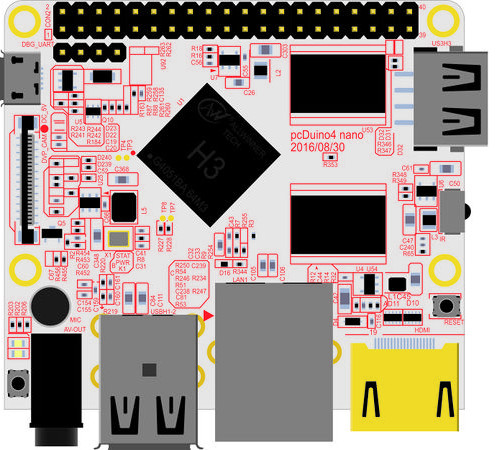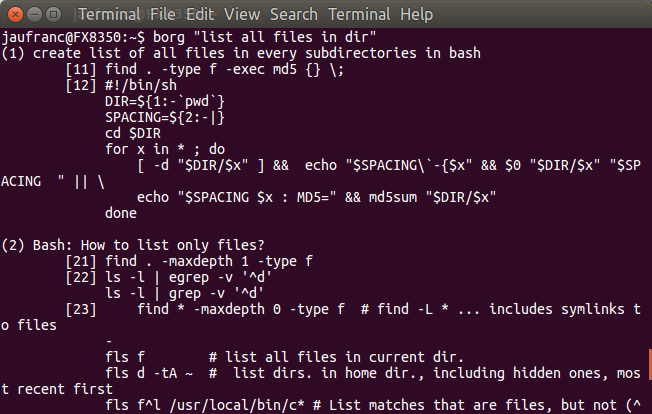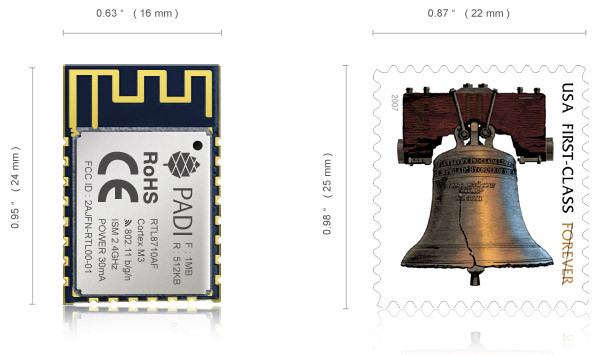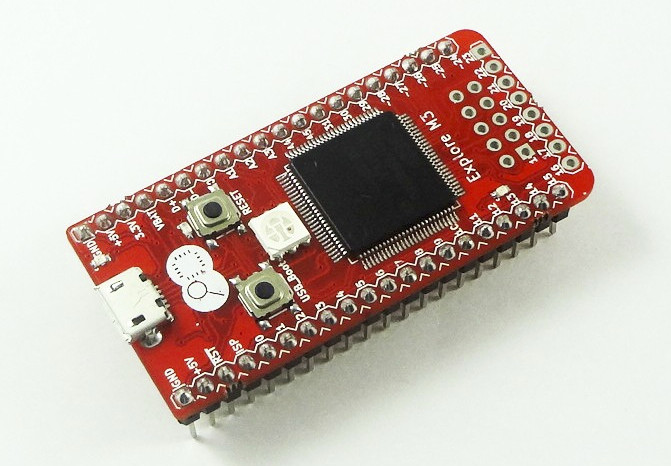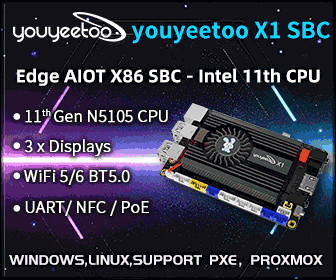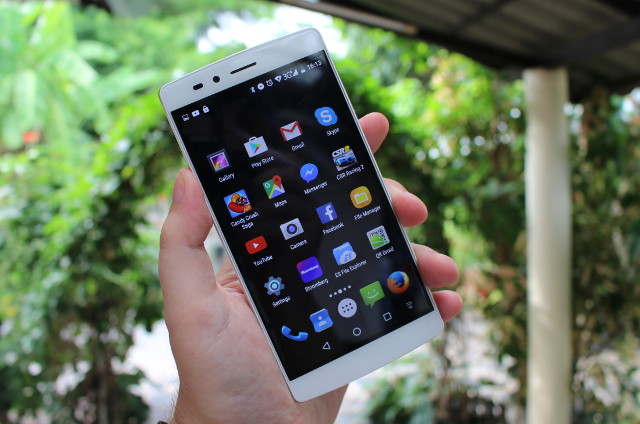We already have plenty of low cost Allwinner H3 development boards thanks to several Shenzhen Xunlong Orange Pi boards and FriendlyARM NanoPi boards among a few others. Here comes another one with pcDuino4 Nano. pcDuino4 Nano (preliminary?) specifications: SoC – Allwinner H3 quad core Cortex A7 @ 1.2 GHz with an ARM Mali-400MP2 GPU up to 600 MHz System Memory – 1GB DDR3 SDRAM Storage – micro SD card slot Video & Audio Output – HDMI and 3.5mm jack for CVBS (composite + stereo audio) Connectivity – 10/100M Ethernet USB – 3x USB 2.0 host ports, 1x micro USB OTG port Camera – DVP Interface Expansions – 40-pin Raspberry Pi compatible header with UART, SPI, I2C, PWM, GPIOs, etc… Debugging – 4-pin header for serial console Misc – Power and reset buttons; 2x LEDs; IR receiver; on-board microphone. Power Supply – 5V/2A via micro USB port; 5V via VDD_5V pin […]
ZTE CSX Crowd-sourced Project Gets to Concept Phase with Eye-tracking Phone, Robotic Glove, Submersible VR Headset
ZTE launched CSX Project last month in order to design a smartphone or other consumer product based on input from the community. People submitted ideas last month, and voted for the best ideas at the beginning of September, and the results are now in. There used to be a popular proposal to make a ZTE Ubuntu phone, but for some reasons since they may make one anyway, this has not been selected by the jury, and instead the three winning ideas are: Self-Adhesive Smartphone with Optimized User Interface via Eye Tracking System and Split Screen Technology Powerglove (Android application control of hands) VR – Interactive diving mask The first solution had by far the most votes, and the main purpose is to use the phone without touching it. Two laser-focused front cameras would track the eye movement to let the user scroll the screen with eye, while it’s been stuck […]
Borg Lets You Search for Bash Commands within the Terminal
There are so many commands available in bash that it’s impossible to know them all, and some commands are rarely run. Usually, you have to switch to your web browser to search for a solution or spending time reading through the manpage. In case you’d like to search for a specific command line you can now do so with borg script. If you want to give it a try, you can install it in Linux as follows:
|
1 2 |
sudo wget https://github.com/crufter/borg/blob/master/builds/borg_linux_amd64\?raw\=true -O /usr/local/bin/borg sudo chmod 755 /usr/local/bin/borg |
Then run the script with your search query in quotes. Some explanations for the output: () denotes hits for your query [] denotes possible solutions … under a [] means more lines to display a “–” in a solution means separate code examples extracted from the same source Some queries are returning useful results such as “list all files in dir” as show in the screenshot above, but others not so, as […]
Hisilicon Hi3798M V200 SoC to Allow for Cheaper 4K TV Boxes with Gigabit Ethernet, SATA, and/or USB 3.0
One year after Hisilicon Hi3798C V200 processor was unveiled at IBC 2015, Hisilicon has now introduced a cost down version named Hisilicon Hi3798M V200 at IBC 2016 with a lower-end Mali-450 GPU, only 2 TS input interfaces, one less USB 3.0 interface, and only 1x GMAC (Gigabit Ethernet MAC) or 1x Fast Ethernet PHY, instead of two GMAC interfaces. The processor also adds 1080p30 H.265 video encoding. Hisilicon Hi3798M V200 key features: CPU – Quad core Cortex A53 processor (15K DMIPS) GPU – ARM Mali-450 + Hisilicon dual-core GPU Memory I/F – 32-bit DDR3/3L/4 Storage I/F – eMMC/NAND/SPI, 1x SATA 3.0, 2x SDIO Video Engine (VPU) HiVXE 2.0 video engine supporting 4Kp60 10-bit H.265 and VP9 decoding, 4Kp30 H.264, MPEG-2, MPEG-4, VC1, VP6/VP8, Real Media 8/9/10 Encoder – H.264/H.265 @ 1080p30 or dual 720p30 Imprex 2.0 processing engine with support for HDR10 & HLG high dynamic range, BT.709/BT.2020, etc.. Peripherals: […]
Pine64 Unveils $2 PADI IoT Stamp WiFi IoT Module with FreeRTOS SDK, Upcoming ARM mbed 5.0 Support
Realtek RTL8710 WiFi IoT modules came out as potential competitors to ESP8266 modules last month, with similar features. an ARM Cortex M3, and a pricing as low as $2 in quantities. However, documentation is often in Chinese only, and based on my experience with an RTL8710AF module limited to AT commands set for now. Software and documentation are likely to improve a lot however, as Pine64, the makers of Pine A64 boards, are about to launch their own “PADI IoT Stamp” RTL8710AF module for just $1.99 in any quantities. PADI IoT Stamp specifications: SoC – Realtek RTL8710AF ARM Cortex-M3 @ 83 MHz with 1MB ROM, 512KB RAM, and 1MB flash Connectivity – 802.11 b/g/n WiFi @ 2.4 GHz – 2.5 GHz (2400 MHz – 2483.5 MHz) with PCB antenna; Station / SoftAP / SoftAP + Station modes; Expansion headers – 22 half-holes with Up to 1x SPI @ 41.5 Mbps […]
Explore M3 Board based on NXP LPC1768 Cortex M3 MCU Comes with Lots of Tutorials (Crowdfunding)
Explore M3 is an ARM Cortex M3 development board powered by a micro USB port, with plenty of I/Os, Arduino compatible, and the developers have also written many tutorials to help people getting started as fast and easily as possible. A starter kit with cables and sensors is also available with the board. Specifications: MCU – NXP LPC1768 ARM Cortex M3 @ up to 100MHz with 512KB flash, 64KB RAM, USB – 1x micro USB 2.0 OTG port for programming and power Expansion Headers – 2x 20-pin male headers + 8-pin unpopulated header with 38x GPIOs, 4x UARTs, 2x CAN, 2x SPI, 2x I2C, 6x PWM, 5x ADC, 1x DAC, 2x interrupt pins, I2S audio, and power signal Debugging – JTAG/SWD Debug connector Misc – USB boot and reset buttons Dimensions – 55mm x 25mm The hardware is somewhat similar to mbed LPC1768 board but with a few more I/Os. […]
Vernee Apollo Lite Helio X20 Smartphone Review – Part 2: Android 6.0 Firmware
I’ve already taken pictures and shown Antutu benchmark in the first part of Vernee Apollo Lite review, an Android 6.0 smartphone powered by Mediatek Helio X20 deca-core processor. Now that I’ve had time to play with the phone for over 10 days, I’ve ready to report my experience and write the second part of the review about performance, features, and issues I encountered with the phone. General Impressions First, the build quality feel pretty good, the phone is light and slim. I’ve only called once or twice, and voice quality was good, but I mostly use my phone over WiFi to browse the web, check emails, watch YouTube, and access social networks. More rarely, I also use GPS while running and during trip, and play some games. To be honest, the first few days did not work as expected, as many apps would either be much slower than last year […]
Large American Technology Companies Abusive Practices Against Bloggers
OK the title might be a little over of the top, but within the last month or so, I’ve been a “victim” of three American companies’ requests, via third parties, namely their customers or technology partners, never directly, to delete or amend the content of this blog. One which I believe is justified albeit not really necessary, and two are just ridiculous, with the latest one prompting me to write this post. The first issue was about a post entitled “Allwinner A64 based Pine A64 and Banana Pi M64 Boards Can Now Run Windows 10 IoT Core“, where I shared .ffu firmware file links that I found directly via a page on Microsoft Azure github about Banana Pi board. There were accessible without any EULA, or agreement. So The Internet being the Internet, where you can freely share links that don’t break any sort of copyrights or promote hate, I […]


